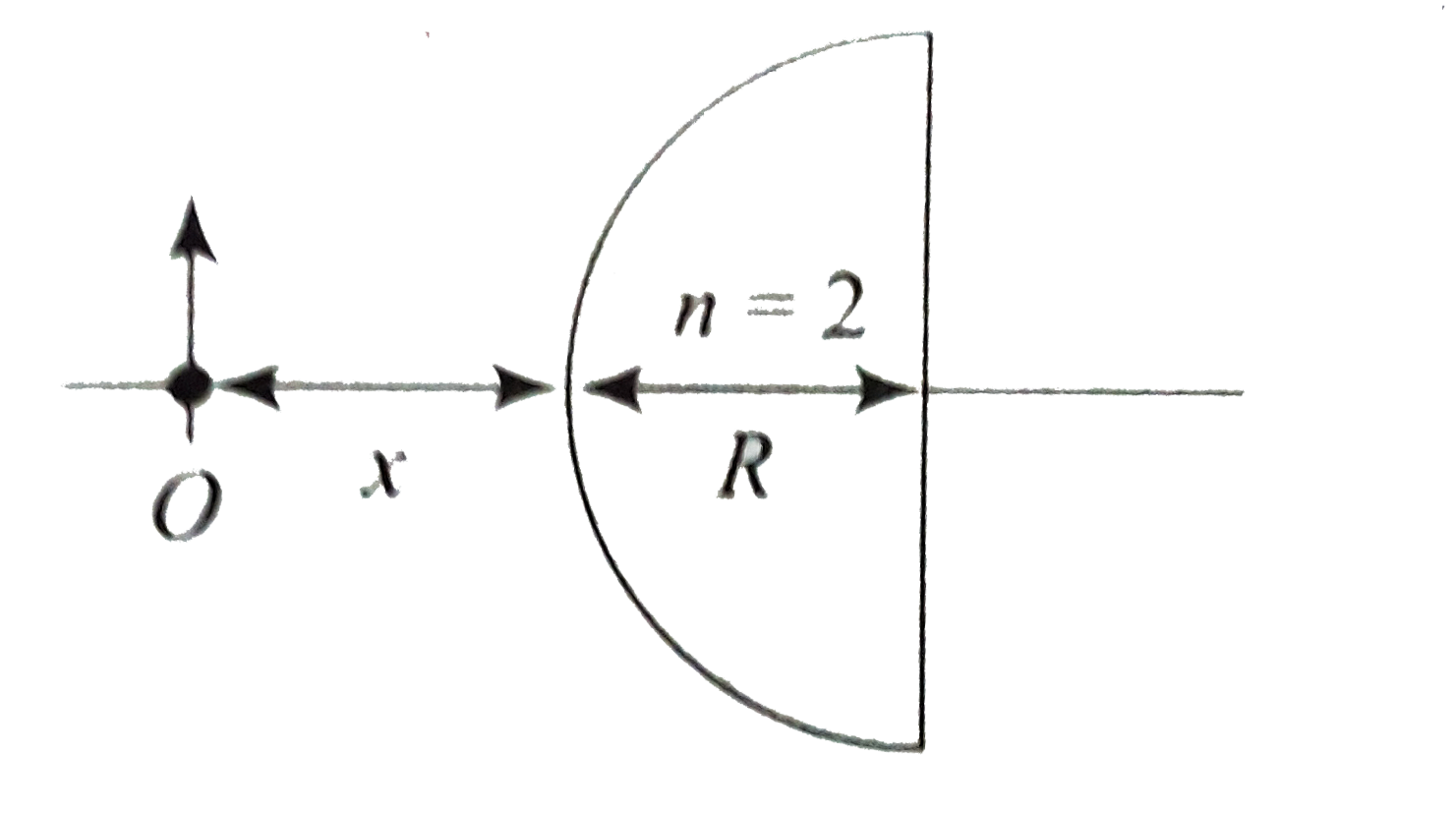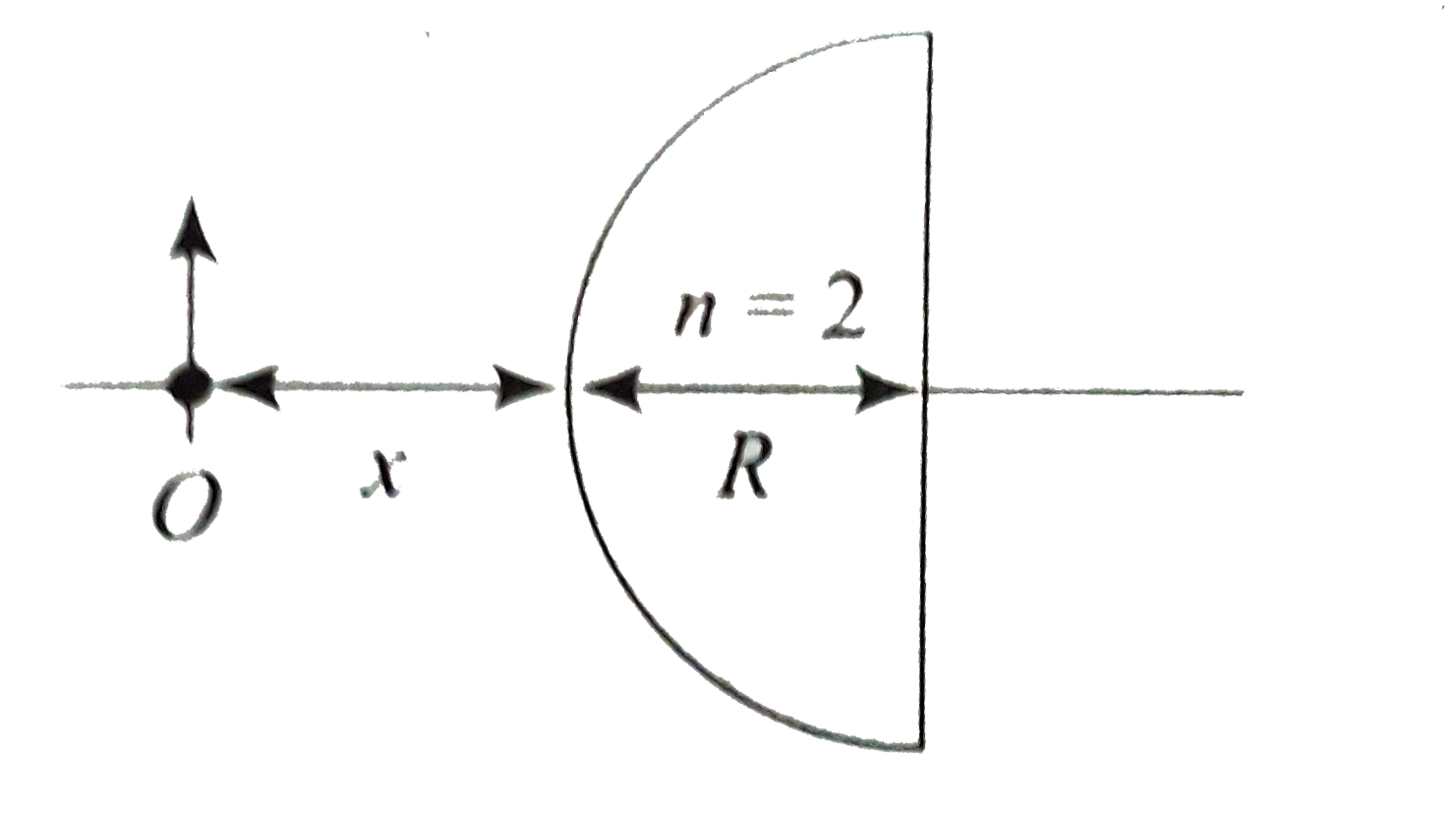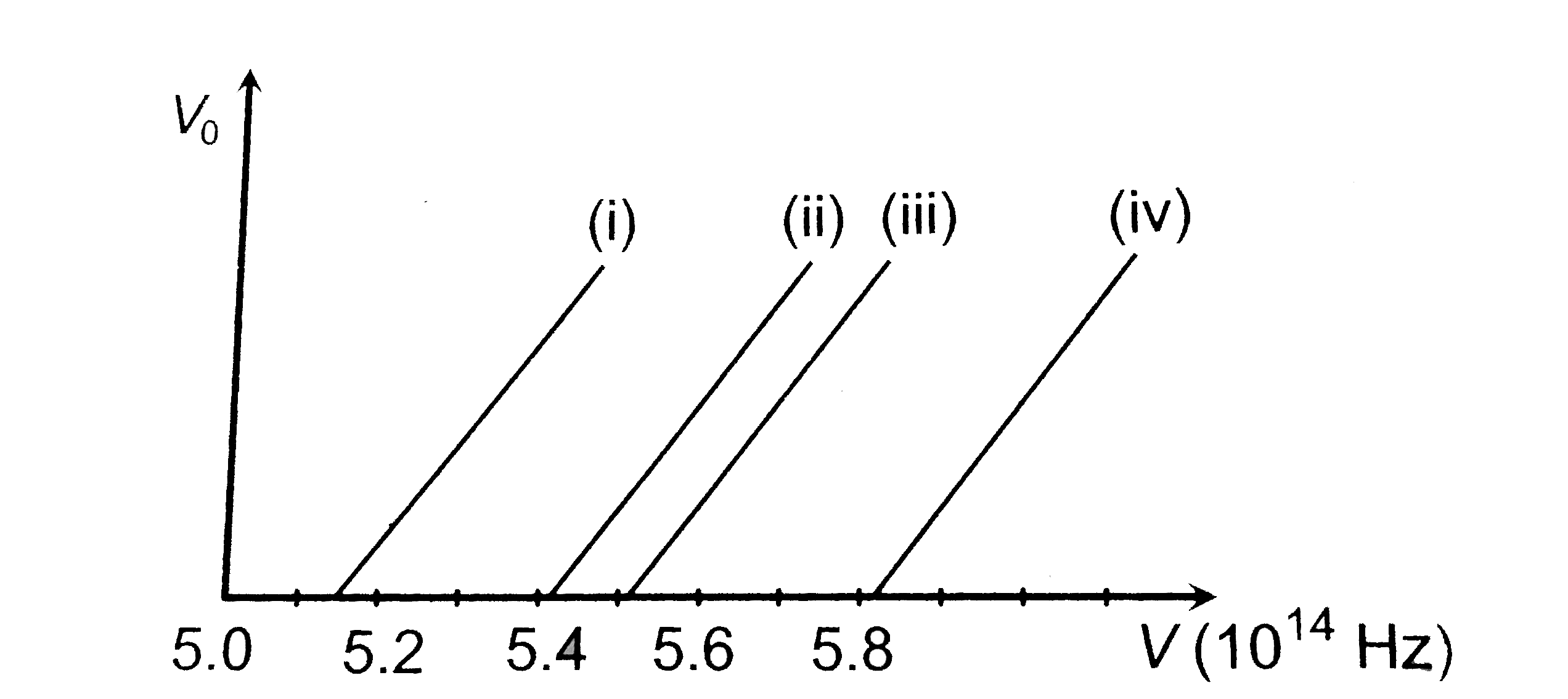A lens form a diminshed and erect image of an object. The magnifiation is 14. Find ratio of distances between object and focus and focus and image:
4:1
1:4
8:1
2:1
The correct Answer is:c.
To solve the problem, we need to find the ratio of distances between the object and the focus, and the focus and the image, given that the lens forms a diminished and erect image with a magnification of 14.
Step 1: Understand the Magnification
The magnification m is given by the formula:
m=vu
where v is the image distance and u is the object distance. Since the image is diminished and erect, the magnification is positive and less than 1, which is given as m=14.
Step 2: Relate Image and Object Distances
From the magnification formula, we can express the relationship between the image distance v and the object distance u:
vu=14
Assuming the image distance v=x, we can express the object distance u as:
u=4v=4x
Step 3: Use the Lens Formula
The lens formula is given by:
1f=1v−1u
Substituting v=x and u=−4x (negative because the object is on the same side as the incoming light for a concave lens):
1f=1x−1−4x
This simplifies to:
1f=1x+14x=4+14x=54x
Thus, we find:
f=4x5
Step 4: Calculate Distances
Now we need to find the distances between the object and the focus, and the focus and the image.
1. Distance between Object and Focus:
- The object is at −4x and the focus is at −4x5.
- The distance dobject−focus is:
dobject−focus=∣∣∣−4x−(−4x5)∣∣∣=∣∣∣−4x+4x5∣∣∣=∣∣∣−20x5+4x5∣∣∣=∣∣∣−16x5∣∣∣=16x5
2. Distance between Focus and Image:
- The focus is at −4x5 and the image is at −x.
- The distance dfocus−image is:
dfocus−image=∣∣∣−4x5−(−x)∣∣∣=∣∣∣−4x5+x∣∣∣=∣∣∣−4x5+5x5∣∣∣=∣∣∣x5∣∣∣=x5
Step 5: Find the Ratio
Now we can find the ratio of the distances:
Ratio=dobject−focusdfocus−image=16x5x5=16x5⋅5x=16
Thus, the ratio of the distances between the object and focus, and the focus and image is:
Ratio=16:1
Final Answer
The ratio of distances between the object and focus, and the focus and image is 16:1.
The magnification m is given by the formula:
m=vu
where v is the image distance and u is the object distance. Since the image is diminished and erect, the magnification is positive and less than 1, which is given as m=14.
From the magnification formula, we can express the relationship between the image distance v and the object distance u:
vu=14
Assuming the image distance v=x, we can express the object distance u as:
u=4v=4x
The lens formula is given by:
1f=1v−1u
Substituting v=x and u=−4x (negative because the object is on the same side as the incoming light for a concave lens):
1f=1x−1−4x
This simplifies to:
1f=1x+14x=4+14x=54x
Thus, we find:
f=4x5
Now we need to find the distances between the object and the focus, and the focus and the image.
- The object is at −4x and the focus is at −4x5.
- The distance dobject−focus is:
dobject−focus=∣∣∣−4x−(−4x5)∣∣∣=∣∣∣−4x+4x5∣∣∣=∣∣∣−20x5+4x5∣∣∣=∣∣∣−16x5∣∣∣=16x5
- The focus is at −4x5 and the image is at −x.
- The distance dfocus−image is:
dfocus−image=∣∣∣−4x5−(−x)∣∣∣=∣∣∣−4x5+x∣∣∣=∣∣∣−4x5+5x5∣∣∣=∣∣∣x5∣∣∣=x5
Now we can find the ratio of the distances:
Ratio=dobject−focusdfocus−image=16x5x5=16x5⋅5x=16
Thus, the ratio of the distances between the object and focus, and the focus and image is:
Ratio=16:1
The ratio of distances between the object and focus, and the focus and image is 16:1.
Topper's Solved these Questions
- GEOMETRICAL OPTICSBOOK - CENGAGE PHYSICS ENGLISHCHAPTER - GEOMETRICAL OPTICSEXERCISE - Assertion-Reasoninig
2 Videos
- GEOMETRICAL OPTICSBOOK - CENGAGE PHYSICS ENGLISHCHAPTER - GEOMETRICAL OPTICSEXERCISE - Linked Comprehension
51 Videos
- GEOMETRICAL OPTICSBOOK - CENGAGE PHYSICS ENGLISHCHAPTER - GEOMETRICAL OPTICSEXERCISE - Subjective
26 Videos
- ELECTRON,PHONTS,PHOTOELECTRIC EFFECT & X-RAYSBOOK - CENGAGE PHYSICS ENGLISHCHAPTER - ELECTRON,PHONTS,PHOTOELECTRIC EFFECT & X-RAYSEXERCISE - dpp 3.3
15 Videos
- HEATING EFFECT OF CURRENTBOOK - CENGAGE PHYSICS ENGLISHCHAPTER - HEATING EFFECT OF CURRENTEXERCISE - Thermal Power in Resistance Connected in Circuit
27 Videos
Similar Questions
Consider a transparent hemispher (n=2) in front of which a small object is placed in air (n=1) as shown in figure.

Q. For which value of x, of the following , will the final image of the object O be virtual?
View SolutionConsider a transparent hemispher (n=2) in front of which a small object is placed in air (n=1) as shown in figure.

Q. Consider a ray starting from O which strikes the spherical surface at grazing incident (i=90∘). Takin x=R, what will be the angle (from normal) at which the ray may emerge from the plane surface.
View SolutionA ray of light is falling on a glass sphere of μ=√3 such that the incident ray and the emergent ray, when produced, intersect at a point on the surface of the sphere. Find the value of angle of incidence.
View SolutionThe figure shows different graphs between stopping potential (V0) and frequency (v) for photosensitive surface of cesium , potassium , sodium and lithium. The plots are parallel. Correct ranking of the targets according to their work function greatest forst will be

View SolutionA room AC run for 5 hour at a voltage of 220V The wiring of the room constant of Cu of 1mm ratio and a length of 10m consumption per day is 10 commerclal unit What fraction of it goes in the joule heated in wire? What would happen if the wiring is made of aluminum of the same distances? [ρcu=1.7×10−8Ω,ρA1=2.7×10−8Ωm]
View SolutionA lens form a diminshed and erect image of an object. The magnifiation is 14. Find ratio of distances between object and focus and focus and image:
View Solutionअवतल लेन्स द्वारा अनंत पर रखी वस्तु का आभासी प्रतिबिम्ब लेन्स के फोकस पर बनता है | यदि वस्तु फोकस पर रखी हों, तब इसका प्रतिबिम्ब कहाँ बनेगा ? क्या अनन्त पर ?
View Solutionएक अवतल लेन्स की फोकस दुरी 20 सेमी है । इससे 15 सेमी दुरी पर वस्तु का प्रतिबिम्ब बनता है तो वस्तु की स्थिति ज्ञात कीजिए ।
View SolutionImages formed by convex lenses for different position of the object. Object between focus F_(1) and optical centre O Image formation - (a) On the same side of the lens as the object (b) Virtual, erect and magnified
View Solutionयदि वस्तु उत्तल लेंस के फोकस पर स्थित हो, तो प्रतिबिम्ब ___ पर बनता है।
View Solutionउत्तल लैंस के सामने रखी वस्तु का वास्तविक प्रतिबिम्ब वस्तु की ऊँचाई का प्राप्त होता है। वस्तु को लैंस की ओर 10 सेमी. पास लाने से अब 3 गुना आवर्धित वास्तविक प्रतिबिम्ब प्राप्त होता है। लैंस की फोकस दूरी ज्ञात करो।
View SolutionIf the object (object) is between the focus of a convex lens and twice the focus-distance, then the image
View Solution10 सेमी फोकस दूरी के एक अवतल लेंस से 15 सेमी दूरी पर एक वस्तु रखी है। लेंस द्वारा बने प्रतिबिम्ब की स्थिति ज्ञात कीजिए।
View Solutionएक अवतल लेंस वस्तु का प्रतिबिम्ब इस प्रकार बनाता है कि प्रतिबिम्ब तथा वस्तु की दूरी 10 सेमी तथा आवर्धन 1/4 है। लेंस की फोकस दूरी ज्ञात कीजिए।
View Solution10 सेमी फोकस दूरी के एक अवतल लेंस से 15 सेमी दूरी पर एक वस्तु रखी है। लेंस द्वारा बने प्रतिबिम्ब की स्थिति ज्ञात कीजिए।
View Solution

